We are on APOD!
October 12th, 2012 by ps1scblogToday’s Astronomy Picture of the Day is a spectacular Pan-STARRS picture of the Triffid and Lagoon nebulae. Here’s the lower resolution version.
The Triffid and Lagoon Nebulae. Credits: Eugine Magnier (UH IfA), Peter Draper & Nigel Metcalfe (Durham University), ©PS1 Consortium
APOD also has a higher (1/10) resolution version, but you can explore the image at 3 times the resolution using this interactive version. Have fun exploring, maybe while looking around you could spot this,
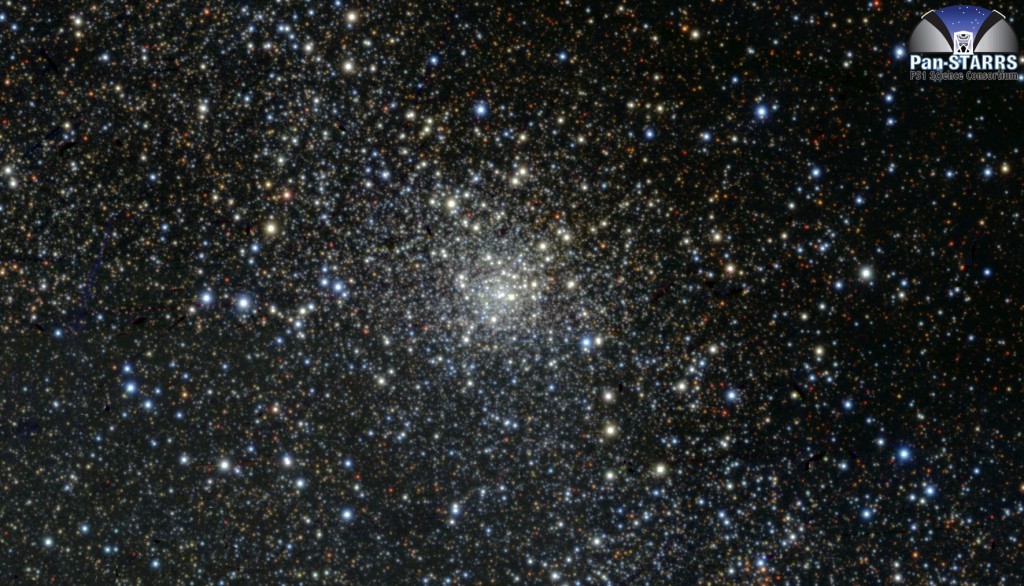
The globular cluster NGC 6544 Credits: Eugine Magnier (UH IfA), Peter Draper & Nigel Metcalfe (Durham University), ©PS1 Consortium
It’s the globular cluster NGC 6544, discovered in 1784 by William Herschel. This lies about 3kpc from the Sun. Globular clusters are found in the halo of our galaxy and are much older and denser that open clusters such as Messier 21 (more of which later).
To make the image, 12 dithered 40sec exposures were stacked in each of three different coloured filters, so the total exposure was only about 8mins per filter. The dithering is necessary as the Pan-STARRS gigapixel camera is made of many individual CCD detectors bonded to the same piece of silicon, and there are unavoidable gaps at the joins where no light is captured. By moving where the camera is pointing slightly between exposures we can ensure that every bit of sky is seen at some stage. As, for scientific purposes, the Pan-STARRS data normally has any background light removed, special software techniques were employed to ensure the nebulae did not dissappear!
The resulting three greyscale images were then aligned and combined using the GIMP photo processing package into an RGB colour picture, a technique quite familar to amateur astrophotographers. To make the colours, the g filter was mapped to the blue channel, the r filter to green and the i filter (which is near infra-red, and would be invisible to the eye) to red. This combination is necessary as Pan-STARRS does not have a Visual filter, which would normally mapped to green. It does have the unusual consequence that hydrogen alpha emission, which at a wavelength of 656nm would look red to the naked eye, comes out looking green on the picture!
The idea for taking images of these particular nebulae came from PS1 scientist Nigel Metcalfe after taking a picture of them with his 4 inch refractor while on holiday in Wales.
Messier 20 is the famous Triffid Nebula. This is actually a star forming nursery, with three objects for the price of one: a cluster of young stars, an emission nebula, seen here glowing green due to hot hydrogen gas, and a blue reflection neubula, where starlight (from the cluster) is reflected off dust grains.
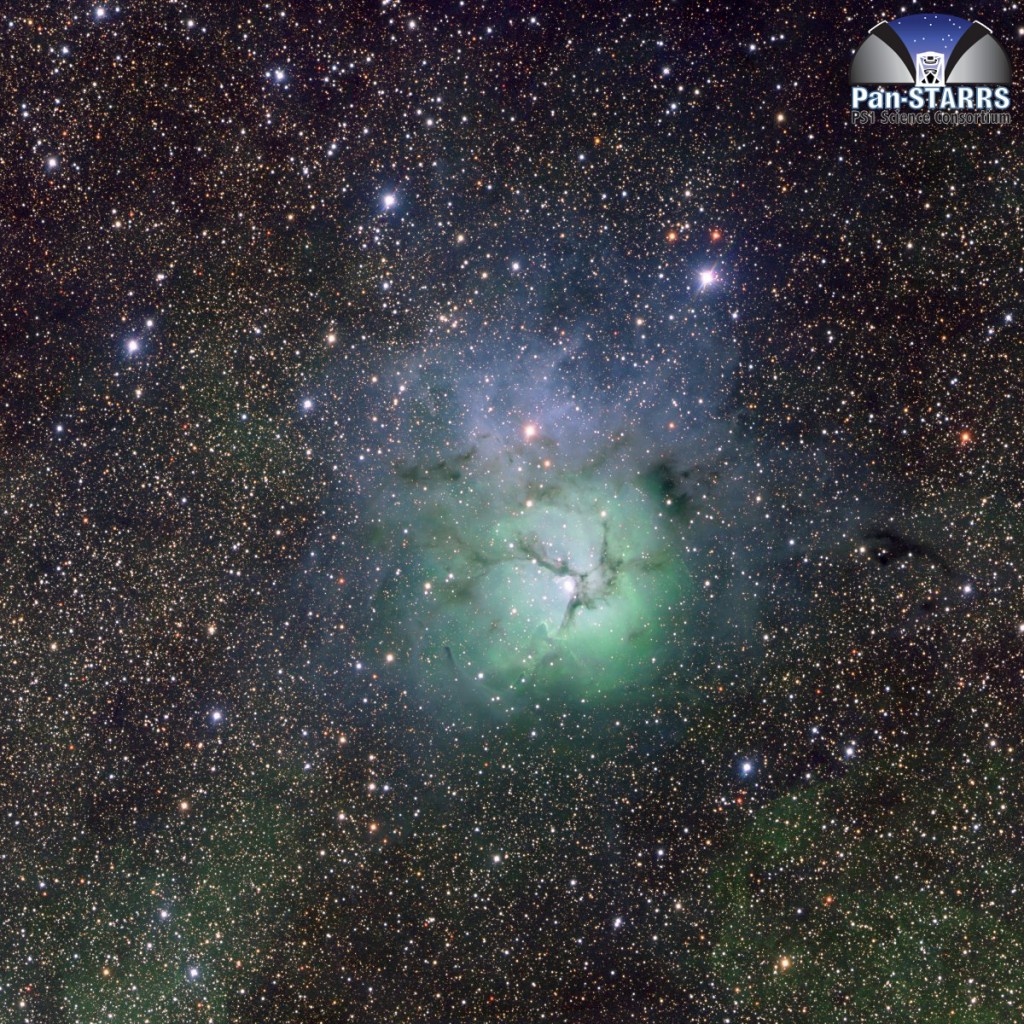
M20, the Triffid Nebula. Credits: Eugine Magnier (UH IfA), Peter Draper & Nigel Metcalfe (Durham University), ©PS1 Consortium
Messier 8, otherwise known as the Lagoon nebula, is a giant interstellar cloud and stellary nursary. It contains several Bok globules which are dark clouds of dense material in the process of collapsing to form stars, see if you can find a few.
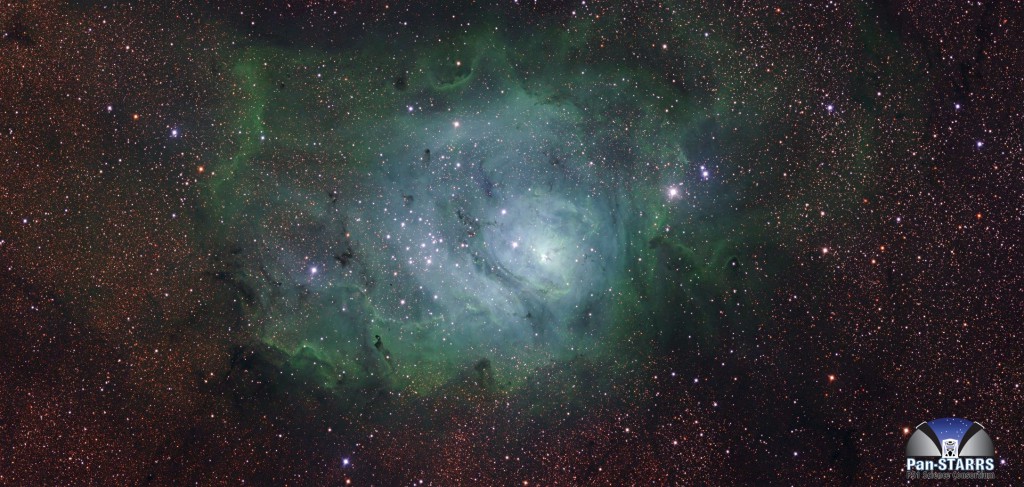
M8, the Lagoon Nebula. Credits: Eugine Magnier (UH IfA), Peter Draper & Nigel Metcalfe (Durham University), ©PS1 Consortium
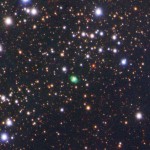
The Planetary Nebula M1-40. Credits: Eugine Magnier (UH IfA), Peter Draper & Nigel Metcalfe (Durham University), ©PS1 Consortium
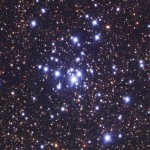
The open cluster Messier 21. Credits: Eugine Magnier (UH IfA), Peter Draper & Nigel Metcalfe (Durham University), ©PS1 Consortium
There’s also other things to look out for in the image. For example M1-40 (left), a planetary nebula lying 2.8kpc from the Sun. Despite the name, these are really stars which have shed their outer layers. It is this hot hydrogen gas which we see glowing brightly.
And then there’s also Messier 21 (right) a relatively young open cluster of stars, believed to be only 4.6 million years old, lying 1.3kpc from the Sun. An open cluster is a group of up to a few thousand stars inside our galaxy that were formed at roughly the same time from the same gas cloud.

